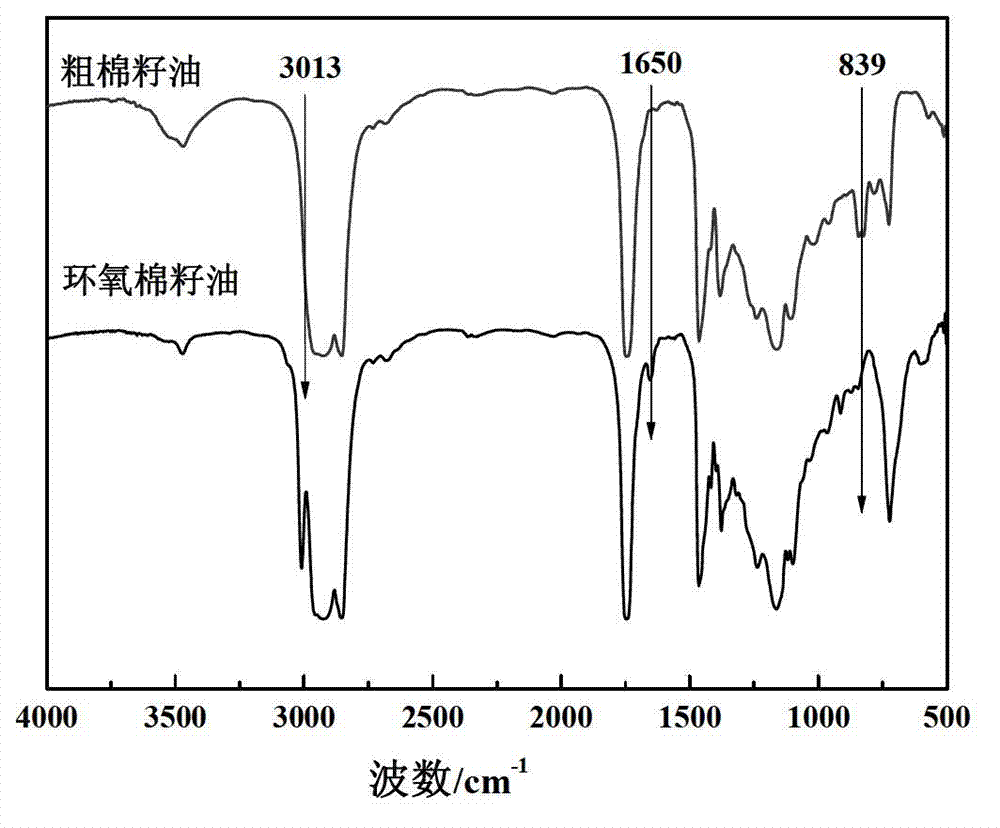Preparation method and application of heterogeneous epoxy catalyst
A technology of oxidation catalyst and phase ring, which is applied in physical/chemical process catalysts, chemical instruments and methods, organic compound/hydride/coordination complex catalysts, etc., to achieve simple preparation process, stable reuse performance, and convenient catalyst recovery. Effect
- Summary
- Abstract
- Description
- Claims
- Application Information
AI Technical Summary
Problems solved by technology
Method used
Image
Examples
Embodiment 1
[0029] (1) PS-[MoO 2 (H 2 Preparation of FSAP)DMF]:
[0030] ① Ligand H 2 Synthesis of FSAP: 1.66g (10mmol) of 3-formyl salicylic acid and 1.09g (10mmol) of o-aminophenol were mixed and dissolved in 30mL of absolute ethanol, stirred for 6h under reflux to produce orange-red precipitate, filtered and dried , recrystallized in boiling alcohol, filtered and dried to obtain the pure ligand H 2 FSAP.
[0031] ②PS-H 2 Synthesis of FSAP: 1g PS (equivalent to 4.69mmol Cl) microspheres were added to a 100mL three-necked flask, swelled in 10mL DMF for 2h, and 3.6g H 2 A 15 mL DMF solution of FSAP (14 mmol, 1:3 amount of microspheres and ligand) was added to the suspension solution, followed by a 100 mL ethyl acetate solution of 4.5 g triethylamine. React for 15 hours under mechanical stirring at 90°C, filter after cooling down to room temperature, wash with hot DMF and methanol several times, and dry in an oven at 120°C to obtain purple-red PS-H 2 FSAP microspheres.
[0032] ③PS...
Embodiment 2
[0035] (1) PS-[MoO 2 (H 2 FSAP) DMF] preparation: same as Example 1.
[0036] (2) Synthesis of epoxy fatty acid methyl ester: 10g of refined fatty acid methyl ester, 0.5gPS-[MoO 2 (H 2 FSAP)DMF], 10mL of 1,2-dichloroethane were added to a 100mL three-necked flask, ozone was introduced into the reaction system at a flow rate of 0.50mg / min, and the epoxidation reaction was carried out at 80°C. After the reaction, the reaction mixture was depressurized Epoxy fatty acid methyl esters are obtained after distillation. The catalyst can be reused 4 times.
Embodiment 3
[0038] (1) PS-MP-[MoO 2 (H 2 Preparation of FSAP)DMF]:
[0039] ① Ligand H 2 Synthesis of FSAP: same as Example 1.
[0040] ②PS-MP-H 2 Synthesis of FSAP: 1g PS-MP (equivalent to 3.5mmol Cl) was added to a 100mL three-neck flask, swelled in 10mL DMF for 2h, 2.69g H 2 A 15 mL DMF solution of FSAP (10.5 mmol, 1:3 amount of microspheres and ligand) was added to the suspension solution, followed by a 100 mL ethyl acetate solution of 4.5 g triethylamine. React for 15 hours under mechanical stirring at 90°C, filter after cooling down to room temperature, wash with hot DMF and methanol several times, and dry in an oven at 120°C to obtain orange PS-MP-H 2 FSAP microspheres.
[0041] ③PS-MP-[MoO 2 (H 2 FSAP) DMF] synthesis: add 1gPS-MP-H in 100mL there-necked flask 2 FSAP (equivalent to 1.17mmol Schiff base ligand), swell in 15mlDMF for 2h, 0.77gMoO 2 (acac) 2 (2.34mmol, 1:2 the amount of Schiff base ligand and metal) was added to the above suspended state, reacted in an oil ...
PUM
 Login to View More
Login to View More Abstract
Description
Claims
Application Information
 Login to View More
Login to View More - R&D
- Intellectual Property
- Life Sciences
- Materials
- Tech Scout
- Unparalleled Data Quality
- Higher Quality Content
- 60% Fewer Hallucinations
Browse by: Latest US Patents, China's latest patents, Technical Efficacy Thesaurus, Application Domain, Technology Topic, Popular Technical Reports.
© 2025 PatSnap. All rights reserved.Legal|Privacy policy|Modern Slavery Act Transparency Statement|Sitemap|About US| Contact US: help@patsnap.com

